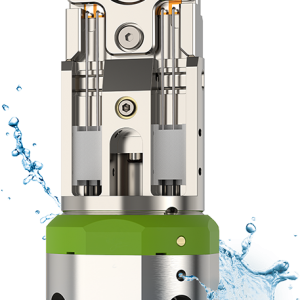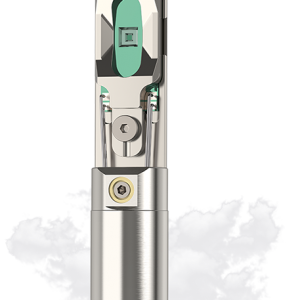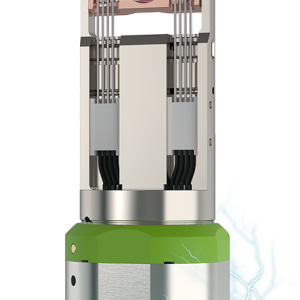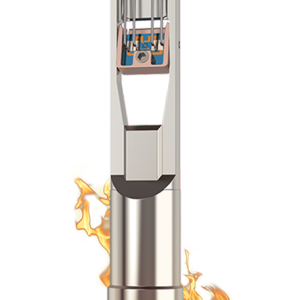Abstract
A common expectation in heterogeneous catalysis is that the optimal activity will occur for the particle size with the highest concentration of undercoordinated step, edge, or corner sites, expectedly in the <5 nm range. However, many metal-catalyzed reactions follow a different trend, where the turnover frequency (TOF, here rate per surface atom) is instead lower for these smaller particles and increases strongly with increasing size toward a stabilized level with a size-independent TOF. Here, we use one of these reactions, the Rh-catalyzed CO hydrogenation to hydrocarbons and C2-oxygenates, to illuminate the origin of this effect. Studying Rh/SiO2 catalysts, we show that smaller (<4 nm) Rh particles are richer in undercoordinated edge, corner, and step sites, but are nevertheless of lower activity because the entire surface, including the planar facets, is shifted to a prohibitively high adsorbate coverage—in this case of CO. In transient experiments, where the inhibiting adsorbates are allowed to desorb, smaller 1.7 nm Rh particles and larger 3.7 nm Rh particles reach similar rates of CO activation despite the steady-state TOF being an order of magnitude higher on the larger particles. This shows that it is a prohibitive adsorbate coverage under reaction conditions rather than a lower number of active sites or a lower intrinsic activity of the sites that causes the lower activity of the smaller particles. In steady-state experiments at 20 bar, the TOF for CO hydrogenation increases by 55% from 3.7 nm Rh particles to 5.3 nm Rh particles even though the measured concentration of step sites decreases by 30% in this size range. This indicates that such undercoordinated sites are not necessarily the primary active centers and that the reaction is instead focused on the planar facets. The reaction kinetics show that the reaction becomes increasingly pressure-dependent with increasing particle size, implying that the surface becomes increasingly free of adsorbates on larger particles. Taken together with the indications that the reaction may be focused on the planar facets, this leads to the new insight that it is a prohibitively high adsorbate coverage on the entire surface (and not just on a minority of undercoordinated sites) that is the primary reason for the low activity of small nanoparticles. The identification of a detrimental high-coverage state for small particles is expected to be of general relevance to the many industrially important reactions sharing the same behavior. The high-coverage state is not exclusively negative, but can also facilitate different reaction pathways. It is the higher CO coverage on small particles that drives the C2-oxygenate formation and is the reason for the high selectivity of rhodium to such complex products, which is at its highest for the smallest (∼2 nm) investigated particles.
Read More: https://pubs.acs.org/doi/abs/10.1021/acscatal.0c05002












